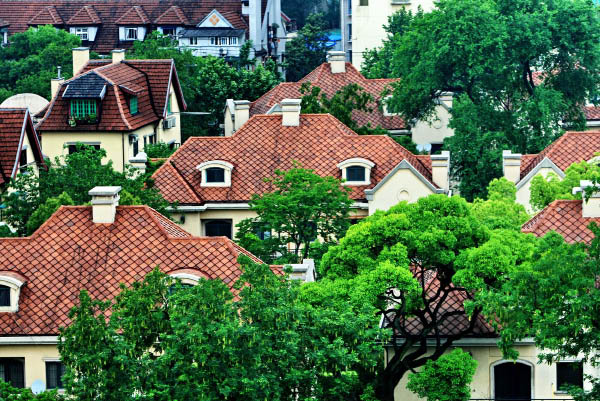Shanghai Reminiscences
By staff reporter LU RUCAI
I arrived in Shanghai amid a throng of local and international travelers just five hours after boarding the high-speed train from Beijing. The southern metropolis, along with several other hot destinations, is reaping ever-richer tourism revenues since recent extensions of the high-speed railway network slashed travel times.
Shanghai Circus World, featuring the multimillion-dollar acrobatic extravaganza ERA – Intersection of Time, was the first leg of my visit. The first of its kind in China, the show is a multimedia theatrical spectacular, distinct for its lavish, ingenious incorporation of Chinese acrobatics, dance, music and martial arts. Thunderous applause erupted periodically from the predominantly international audience during the 100-minute performance. This high-tech psychedelic gig evolves through a constant collision between past and future. Eight years after its première, the show still sells out daily at peak season.
Being in Shanghai is itself like experiencing a faceted juncture in time. This world financial center, bristling with dynamic postmodern tower blocks, is also imbued with the rich heritage of genteel, south-of-Yangtze civilization and its short-lived colonial era.
The Bund
This waterfront area is one of Shanghai’s most distinct landmarks. A convergence of international architectural genres, it appeared in the 1920s. Today these time-honored classic buildings house world-established fashion and hotel brands whose kudos has also lasted for more than a century. This one-km-long strip along the Huangpu River is site of the city’s best restaurants, offering delectable fare amid classic surrounds.
A visit to the city’s Archive Museum is a good way to find out more about the Bund, past and present. During my stay its main feature was the City Memory – Modern History of Shanghai exhibition, a section of which focused on the Bund. A cache of 600 or more documents, photos and objects delineate the city’s evolution after the late 19th century to the forefront of feudal China’s exchanges with the broader world.
Local museums are always reliable sources of information. The Telecom Museum traces Shanghai’s telecommunications journey from the telegraph, which debuted in China in 1871 with the establishment in Shanghai of the first line, to wireless telecom technologies. Exhibits include the first home-developed Teletype. The museum accepts tour group reservations from Monday to Friday and is open to individual visitors at the weekend. For independent tourists whose time does not fit this slot, a stop-by at the site is recommended. This eclectically designed edifice, built in 1921, is a historical artifact in itself. One of its tenants was the Great Northern Telegraph Company of Denmark, which laid China’s first submarine telegraph cable.
The Postal Service Museum complex has distinctively British features. Built in the 1920s, it was originally the city’s general post office. Its exhibits include China’s first stamp, issued in 1878.
 |
| Old villas in the former French Concession. |
Other than the Rockbund Art Museum, which charges a modest RMB 15 that includes a cup of coffee, admission to local museums is free.
While strolling along the Bund I saw a couple having their wedding photos taken at the gate of the Shanghai Pudong Development Bank headquarters. Originally the property of the HSBC in the 1920s and 1930s, this 90-year-old building’s neo-classical design, exquisite embellishments and symmetrical proportions make it outstanding in the district.
Walls near the ceiling of the octagonal lobby are lavishly adorned with eight mosaic murals, and the dome bears frescoes that include the 12 signs of the zodiac, personifications of the sun and moon, and representations of the eight HSBC financial centers. Covered in stucco and paint soon after the founding of the PRC for political reasons, these ornamentations were not discovered until the 1990s.
Before 1949, the Fairmont Peace Hotel, formerly the Cathay Hotel invested by Jewish tycoon Sir Victor Sassoon, was Shanghai’s most prestigious hostelry. A main Bund landmark over the past century, it is a monument to the blending of cultures in a city celebrated for its cosmopolitism.
Cultural Xujiahui
Xujiahui is best known as Shanghai’s commercial hub, but has far more to offer. Last October it was awarded the status of a national 4A tourist spot by virtue of its historical and cultural legacy. Although rare for an urban district in a big city, Xujiahui truly merits this distinction. Its 2.4-square-kilometer area is strewn with a dozens of sites of historical interest.

